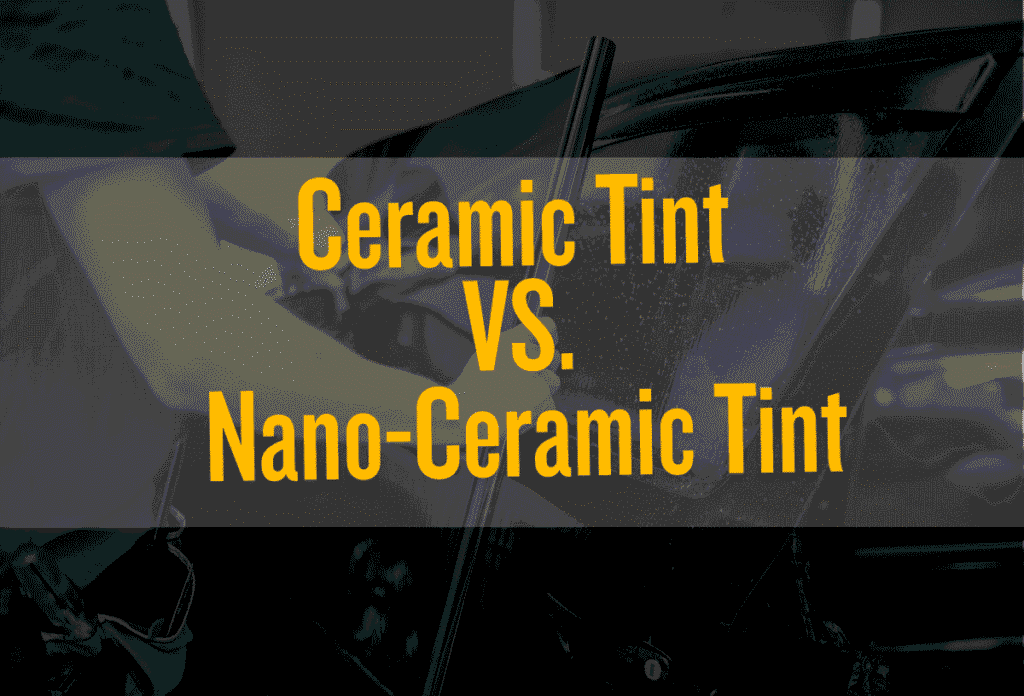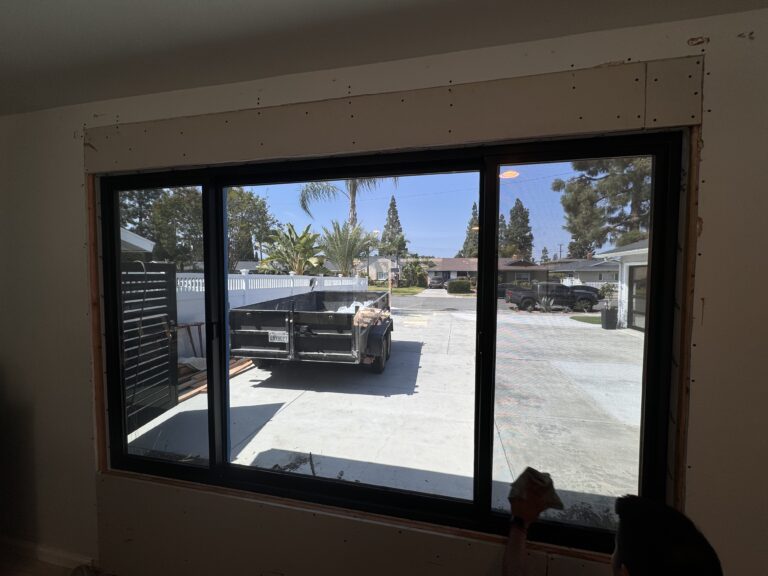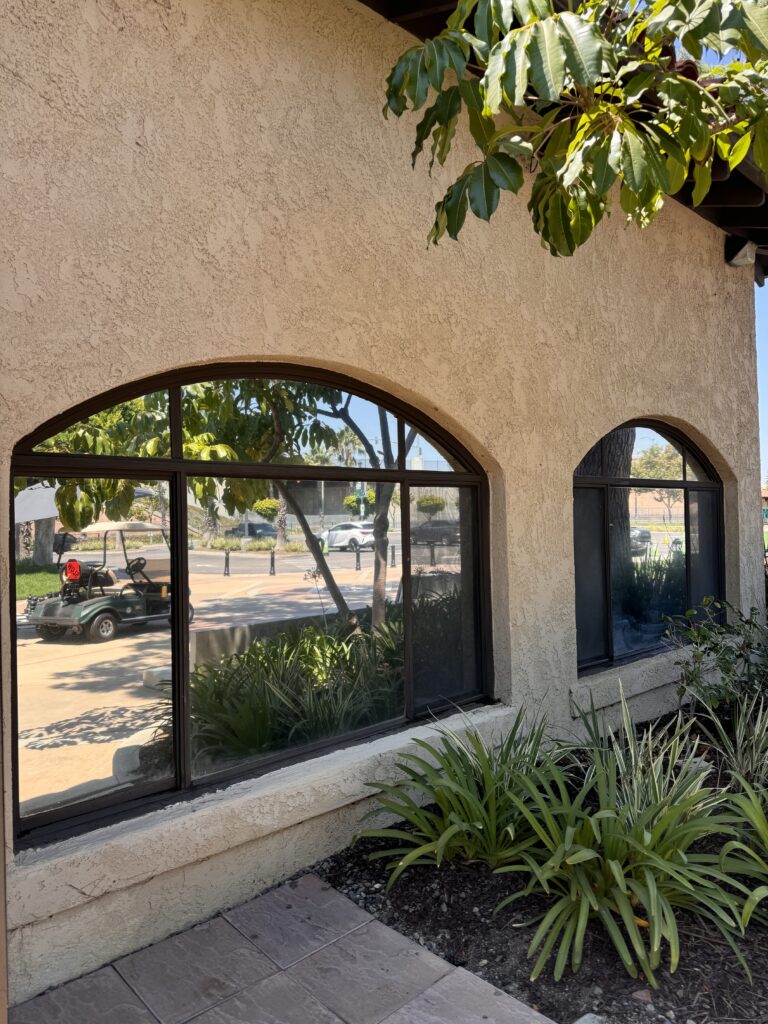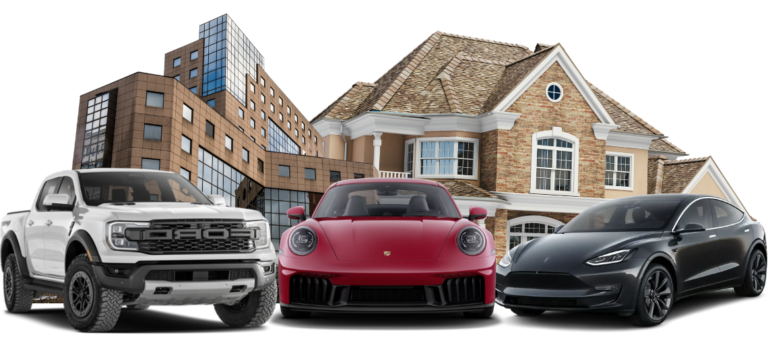Car owners often face one big question before getting their windows tinted: which tint is better, ceramic or nano-ceramic? Window tinting is more than just about looks; it’s about comfort, safety, and protecting your investment. With rising heat levels, UV damage, and the constant need for better driving comfort, choosing the right window tint can make all the difference. Many drivers know that regular dyed or metallic tints don’t hold up as well over time. But how do you know which one is right for your car? This personal experience guide breaks down each option in detail, compares them side by side, and helps you decide which is worth the investment. We’ll cover heat rejection, UV protection, glare reduction, clarity, durability, cost.
What is Window Tinting and Why Does It Matter?
Window tinting is the process of applying a thin film to your car’s glass to reduce sunlight, heat, and UV penetration. At first glance, many people think it’s just for looks, but it plays a much bigger role. Quality tint helps regulate cabin temperature, protects the interior from fading, improves privacy, and shields your skin from harmful UV rays. In hot climates, a properly installed tint can reduce heat buildup inside your car by up to 60%, making it far more comfortable when parked under the sun.
There are several types of tints available, dyed, metallic, carbon, ceramic, and nano-ceramic. Each comes with different levels of performance and price. For example, dyed tint is affordable but fades quickly, while metallic tint offers better durability but may interfere with signals like GPS and cell reception. Carbon tint gives improved heat rejection but is still not as advanced as ceramic films. This is where ceramic and nano-ceramic tints stand out, offering better clarity, heat reduction, and long-lasting performance. Understanding these differences is key if you want both value and performance from your tinting choice.
Ceramic Window Tint Explained
What is Ceramic Tint?
Ceramic window tint is made with non-metallic ceramic particles that are invisible to the eye but extremely effective at blocking heat and UV rays. Unlike older tint types that use dyes or metals, ceramic tint is designed to last longer, provide clear visibility, and offer reliable protection. One of the biggest advantages is that ceramic films don’t interfere with modern car electronics such as GPS, Bluetooth, or satellite radio. This makes them a smart choice for today’s technology-driven vehicles.
Benefits of Ceramic Tint
The main benefit of ceramic tint is its ability to block up to 99% of harmful UV rays, which not only protects passengers but also prevents your car’s interior from cracking, fading, and deteriorating. Ceramic films also reduce glare from headlights and sunlight, making driving safer during both day and night. Another standout feature is heat rejection; ceramic tint can cut down a significant amount of solar heat, keeping your cabin cooler and reducing the need for air conditioning. This translates to better fuel efficiency in the long run. Additionally, ceramic tints are scratch-resistant, ensuring they look great for years without bubbling or peeling.
Downsides of Ceramic Tint
The only real drawback to ceramic tint is its cost. Compared to dyed or carbon films, ceramic options are more expensive. However, most drivers find the long-term benefits well worth the price. It’s also important to note that ceramic tint should always be installed by experienced professionals to ensure a clean, bubble-free finish.
Nano-Ceramic Window Tint Explained
What is Nano-Ceramic Tint?
Nano-ceramic tint takes the technology of regular ceramic tint a step further. It uses nanotechnology, ultra-fine ceramic particles that are evenly distributed across the film for maximum performance. This advanced formula allows nano-ceramic films to reject more infrared heat while maintaining crystal-clear visibility both during the day and at night.
Benefits of Nano-Ceramic Tint
Nano-ceramic films offer the highest level of heat rejection available in window tinting, blocking up to 98% of infrared rays. This makes a huge difference in hot climates, where keeping the car cool is a daily struggle. The clarity is also unmatched, with no haze or distortion, even when looking through at sharp angles. Like ceramic tints, nano-ceramic options block nearly all UV rays and reduce glare, making driving more comfortable and safe. They are also extremely durable, resisting fading, peeling, or discolouration even after years of exposure.
Downsides of Nano-Ceramic Tint
Nano-ceramic tint is considered the premium option, and with that comes the highest price tag. It’s not unusual for nano-ceramic installations to cost more than double the price of regular tint. However, for drivers who want the best in comfort, protection, and appearance, it’s an investment that pays off in the long run.
Ceramic vs Nano-Ceramic Tint: Side-by-Side Comparison
| Feature | Ceramic Tint | Nano-Ceramic Tint |
| Heat Rejection | High (blocks ~80% IR rays) | Superior (blocks up to 98% IR) |
| UV Protection | 99% | 99% |
| Glare Reduction | Strong | Stronger |
| Signal Interference | None | None |
| Durability | Long-lasting | Longest-lasting |
| Clarity | Excellent | Crystal-clear |
| Cost | Premium but affordable | Highest price, premium choice |
This table shows why both options are excellent compared to standard tints, but nano-ceramic clearly provides the best overall performance.
How to Choose the Right Window Tint for Your Car
Choosing between ceramic and nano-ceramic tint depends on your budget, climate, and personal needs. If you want a high-quality film that provides excellent heat rejection, UV protection, and clarity at a reasonable cost, ceramic tint is a great choice. On the other hand, if you live in a hot region, own a luxury vehicle, or simply want the very best option available, nano-ceramic tint is worth the higher investment.
It’s also helpful to stick to trusted brands. Well-known names like 3M Crystalline, SunTek CIR, LLumar FormulaOne Pinnacle, and XPEL Prime XR Plus have consistently ranked high in performance tests. Choosing these brands ensures you’re getting a reliable product backed by warranties.
Expert Insights: What Professionals Recommend
At OC Tint Solutions, we’ve installed thousands of ceramic and nano-ceramic films across Orange County. Based on our experience, ceramic tint works well for most drivers who want a balance of comfort, affordability, and long-term performance. Nano-ceramic, on the other hand, is preferred by those who value maximum heat rejection, ultimate clarity, and premium protection.
We also recommend considering the lifetime warranty and UV protection benefits that come with our films. Many clients appreciate that our installations come with police ticket insurance and are cut using precision computer technology to ensure a perfect fit every time. This level of detail guarantees performance, peace of mind, and lasting results.
FAQs About Ceramic and Nano-Ceramic Tint
Is nano-ceramic tint worth the money?
Nano-ceramic tint is considered the premium option in window films, and while it comes at a higher price, many drivers find it well worth the investment. If you live in a region with strong sun exposure, deal with extreme heat, or want the highest level of comfort inside your car, then nano-ceramic tint is a smart choice. Its superior heat rejection and crystal-clear visibility make it especially valuable for people who spend a lot of time driving.
Does ceramic tint block heat better than carbon tint?
Yes. Ceramic tint, and especially nano-ceramic tint, provides a much higher level of heat rejection than carbon films. Carbon tint is a step above dyed films but cannot compete with the infrared-blocking power of ceramic technology. This means ceramic and nano-ceramic not only keep your cabin cooler but also reduce strain on your air conditioning system.
How long does ceramic tint last?
When installed correctly by a professional tint shop, ceramic and nano-ceramic films can last for the lifetime of your vehicle. Unlike dyed tints that fade or bubble over time, ceramic films are built with advanced materials that resist discolouration, peeling, and scratches. This ensures your car continues to look sharp while maintaining protection for years.
Will ceramic tint interfere with cell signal or GPS?
No. Unlike metallic tints, which can block or weaken signals, ceramic and nano-ceramic tints are designed to be signal-friendly. You won’t experience interruptions with your cell phone, Bluetooth, GPS navigation, or satellite radio. This makes them a great fit for modern vehicles that rely on advanced connectivity.
Final Verdict – Which Tint Should You Choose?
Ceramic and nano-ceramic window tints are both excellent choices that outperform traditional options like dyed or metallic films. If you want strong protection, clear visibility, and long-lasting durability at a reasonable price, ceramic tint is the smart choice. For drivers who want the very best in comfort, maximum heat reduction, and premium clarity, nano-ceramic tint is the winner. The decision comes down to balancing your budget with the level of performance you want for your vehicle.
Why Choose OC Tint Solutions for Your Tinting Needs
If you are located in Anaheim, Costa Mesa, or anywhere in Orange County, OC Tint Solutions is the trusted name for professional window tinting. We back every installation with a warranty, guarantee 99.9% UV protection, and use computer-cut technology for perfect precision. Our hassle-free warranty claims, expert team, and commitment to customer satisfaction set us apart in the industry.
Whether you choose ceramic tint or nano-ceramic tint, you’ll receive professional installation and lasting results that protect your vehicle and improve your driving experience.
👉 Request a Quote Today and let us help you drive cooler, safer, and more comfortably every day.




